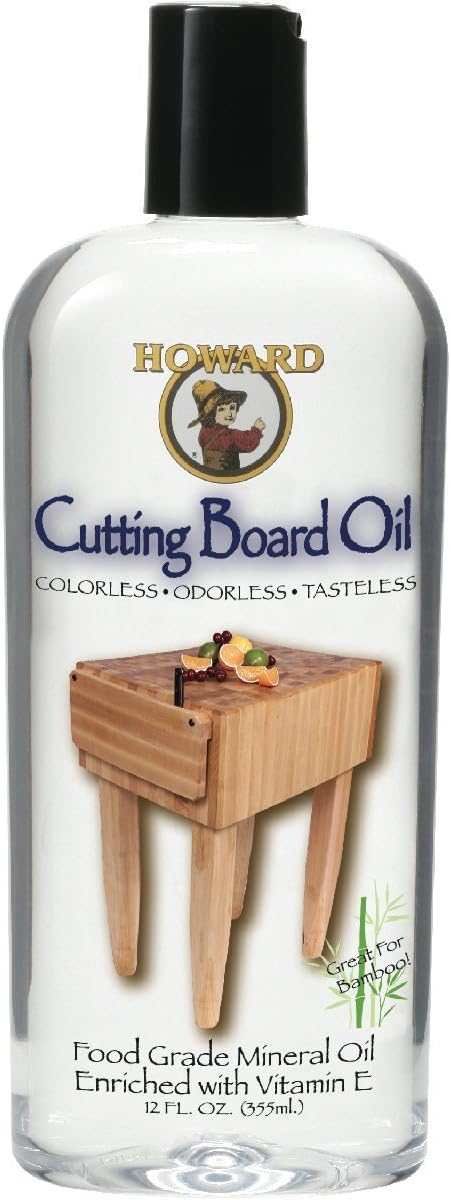





Price: $10.47 - $9.97
(as of Apr 12, 2025 20:47:54 UTC - Details)
What is the Best Oil for Wooden Bowls? A Comprehensive Guide
Introduction
When it comes to maintaining the beauty and longevity of wooden bowls, choosing the right oil is essential. Whether you’re a seasoned woodworker or just starting your journey into the world of wooden kitchenware, understanding what is the best oil for wooden bowls can make a significant difference. The right oil not only enhances the natural grain of the wood but also provides essential protection against moisture and stains. In this guide, we will explore various types of oils, their benefits, and how to properly apply them. Let’s dive in!
Understanding the Importance of Oil for Wooden Bowls
What Makes Oil Important?
Wooden bowls are not just functional; they are a beautiful addition to any kitchen. However, wood is a natural material that can absorb moisture and odors. This is where oil comes into play. Oil creates a protective barrier, preventing the wood from cracking and drying out. By regularly applying the right oil, you can maintain the bowl's appearance and ensure it lasts for years.
Health Considerations: Food-Safe Oils
When selecting an oil for your wooden bowl, it’s crucial to choose food-safe options. This means the oil should not leach toxic substances into food. Look for oils that are labeled as food-safe. Many people wonder, “Is mineral oil safe for wooden bowls?” The answer is yes! Mineral oil is a popular choice due to its safety and effectiveness.
Choosing the Best Oil for Wooden Bowls
1. Mineral Oil: The All-Rounder
Benefits of Mineral Oil
Mineral oil is a highly recommended choice for wooden bowls. It’s inexpensive, readily available, and food-safe. One of its main advantages is that it doesn’t go rancid, unlike some natural oils. This means you can use it without worrying about spoilage.
How to Apply Mineral Oil
To apply mineral oil, start by cleaning the bowl with warm, soapy water. Once it’s dry, pour a small amount of mineral oil onto a soft cloth and rub it into the wood in circular motions. Let it soak for several hours, then wipe off any excess. Regular application will keep your bowl looking great!
2. Walnut Oil: The Natural Choice
Why Choose Walnut Oil?
If you’re looking for a more natural option, walnut oil is an excellent choice. It has a lovely finish and enhances the wood’s natural beauty. However, be cautious if you or anyone in your household has nut allergies.
Application Tips for Walnut Oil
Before using walnut oil, ensure your bowl is clean and dry. Apply the oil in the same manner as mineral oil. It will penetrate the wood and provide a rich, glossy finish. Plus, walnut oil is also food-safe, making it a great option for kitchen items.
3. Coconut Oil: The Versatile Option
Coconut Oil Benefits
Coconut oil is not only great for cooking; it can also be used on wooden bowls. It’s a natural oil that has antibacterial properties, which can help keep your bowls clean. However, be aware that it can go rancid over time.
How to Use Coconut Oil
To use coconut oil, melt it slightly if it’s solid. Apply it to the wooden bowl with a cloth, ensuring even coverage. Let it sit for a few hours before wiping off any excess. Remember, while coconut oil gives a beautiful finish, it may require more frequent reapplication compared to mineral oil.
4. Linseed Oil: A Traditional Favorite
The Advantages of Linseed Oil
Linseed oil, derived from flax seeds, is another traditional choice for treating wooden bowls. It provides a durable finish and helps protect against moisture. However, it takes longer to dry compared to other oils.
Applying Linseed Oil
For linseed oil, follow the same cleaning process. Apply a thin layer and allow it to dry completely before using the bowl again. This oil can create a beautiful, rich color in the wood, but remember that it may not be suitable for all users due to its drying time.
Maintenance Tips for Wooden Bowls
Regular Cleaning and Oiling
To keep your wooden bowls in top condition, regular cleaning and oiling are essential. Avoid soaking them in water and always hand wash them instead. After washing, dry your bowls immediately to prevent moisture damage.
Signs Your Bowl Needs Oiling
Over time, you may notice that your bowl looks dull or feels rough to the touch. These are signs that it’s time for a fresh application of oil. Regular upkeep will ensure your wooden bowls remain beautiful and functional.
Conclusion
In summary, choosing the best oil for wooden bowls depends on your specific needs and preferences. Mineral oil is an excellent all-rounder, while walnut oil offers a natural alternative. Coconut oil adds versatility, and linseed oil provides a traditional finish. Regardless of the oil you choose, regular maintenance is key to keeping your wooden bowls in great shape. Remember, a well-oiled bowl is not only more attractive but also more durable, making it a cherished item in your kitchen for years to come. Happy cooking and caring for your wooden treasures!
Cutting Board Oil is a deep penetrating 100% Pure USP Food Grade Mineral Oil that is tasteless, odorless, colorless, and will never go rancid
Cutting Board Oil rejuvenates dry wood, including: cutting boards, butcher blocks, countertops, wooden bowls and utensils
Deeply penetrates into wood pores, bringing out the rich natural wood color and helps prevent drying and cracking
Cutting Board Oil is perfect for the initial “oiling” or “seasoning” of cutting boards and butcher blocks
Made in USA with strict quality controls – No contact with nuts, gluten or other potentially allergenic materials
